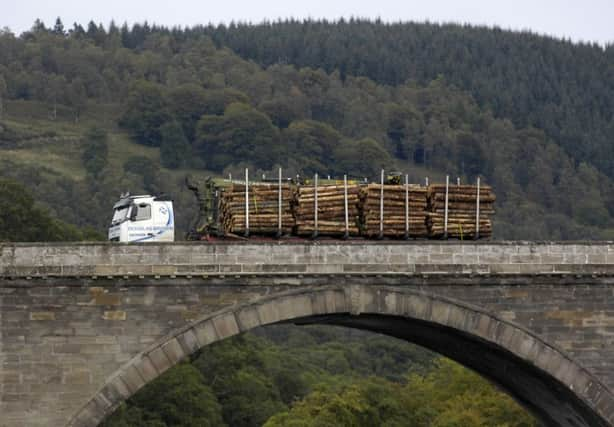We could be on a siding to something here


While rail freight performs a vital role on the key inter-city routes within Scotland, freight trains are a rare sight on most of our long-distance rural railways. They do run over the Far North Line to Caithness and the West Highland Line to Fort William, but it is many years since the routes to Kyle of Lochalsh, Mallaig, Oban and Stranraer have seen regular freight traffic. This is a wasted opportunity – and innovation could be the key to making better use of these underutilised public assets.
With their dedicated track and signalling infrastructure, railways are inherently expensive to operate and maintain, and modern locomotives can cost £2 million each – so the railway is “volume hungry”, needing large quantities of freight and passengers to make sense of the economics. Strict commercial viability is only achievable in the most ideal of circumstances, and rail networks worldwide are essentially supported for the economic, social and environmental benefits they generate. Nevertheless, with pressure on public spending, it is important that our rural rail routes perform the widest possible function, demonstrating value for money for the taxpayer. Until the 1980s, for example, Scotland’s rural rail routes were multi-purpose – carrying not just passengers but also parcels, newspapers, Royal Mail and freight traffic. Nowadays the lines to Kyle, Mallaig, Oban and Stranraer are purely passenger operations – freight trains were withdrawn when it became just too difficult to aggregate enough volume for cost-effective big trainloads along rural corridors where the flexibility of road haulage can be difficult to match.
Advertisement
Hide AdAdvertisement
Hide AdA particular disappointment from a social and environmental perspective has been rail’s complete loss of timber traffic in Scotland, given that many of our rural routes run through the heart of key forest areas. During the 1990s, up to 18 railheads served Scotland’s massive annual harvest of trees, but small and poorly sited Victorian-era rail facilities – and the lack of direct rail connections into most major board and sawmills – undermined rail’s ability to provide a competitive offer. Purpose-built new railheads – well-sited close to forests, with lengthy sidings, good road access and plenty of storage space – have been investigated at various times, but the commercial justification for multi-million pound expenditure on a low-margin business has yet to be identified.
However, innovation could be the key to unlocking Scotland-wide transportation of timber by rail. It is now 11 years since a striking Scottish rail innovation was first unveiled – yet this clever piece of kit, which has the potential to transform freight transport on rural rail routes, is still awaiting full approval from Network Rail, the public company which controls the country’s railway infrastructure. The “Non-Intrusive Crossover System” (NICS) was designed to provide a low-cost means of installing rail siding access from the main line where the cost of conventional connection would be too high for the levels of rail traffic likely to be involved. Studies in 2006 showed that NICS could have particularly useful applications for timber transport along the West Highland lines from Glasgow, from Inverness to Kyle of Lochalsh and Caithness, and on the Ayr-Stranraer route serving the extensive South Ayrshire and Galloway forests.
NICS allows the movement of a train from the main line onto a siding without cutting into existing rails – an approaching train travels over a hinged assembly of temporary rails, raised 50mm above the height of the existing rails and then reaches the physically separate semi-permanent siding. Conventional signalling is not required, as NICS is deployed in a “possession environment”, as is the case when railway engineers take possession of the main line for repair or renewal work. The kit has already been successfully deployed on major engineering possessions on the Tyne & Wear Metro network.
The beauty of NICS for timber flows is that it would allow sidings to be created in the heart of the forests – eliminating damaging lorry transport on inadequate rural roads, and transforming the economics of rail haulage in the process – with the kit then moved on to another location once harvesting was completed. If we are to reap the potential of this imaginative concept, then the logical next step is a commercial and operational trial for timber traffic on a rural rail route in western or northern Scotland.
We all want to see more freight on rail, and timber lorries continue to be a big source of disruption to rural communities across Scotland. By collaborating on innovation and investment, the rail industry and Scottish Government can help transform the role of our rural railways – realising the lessons from as far afield as New Zealand, Norway and Sweden that “tourists and timber” are a winning traffic combination on Highland-type rail routes.
• David Spaven is Scottish Representative of the UK’s Rail Freight Group, www.rfg.org.uk